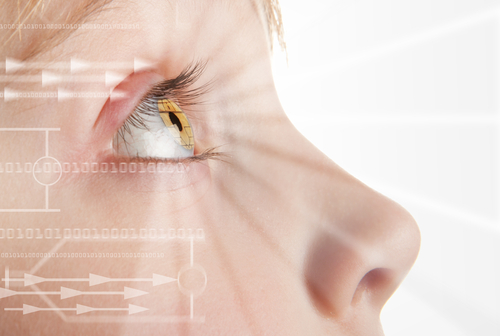Tracking Eye Movement Can Help Assess Language Perception in Children with Neurodevelopmental Delays

Tracking eye movement can be a viable approach to assessing language perception in children with normal development and those with neurodevelopmental delay.
The study, “Using Eye Tracking (ET) as a Tool to Assess Receptive Language (RL) in Typically Developing (TD) Children and Children at High Risk for Neurodevelopmental Delay (NDD),” was presented by Mary Vernov at the Pediatric Academic Societies 2018 Meeting in Toronto.
Evaluation of neurodevelopmental delay during infancy can be challenging, particularly in children with significant motor delays — such as those with cerebral palsy — which often are associated with a difficulty in speaking. Researchers hope to find new ways to conduct this type of evaluation.
They evaluated the potential of eye tracking, a noninvasive tool that records eye movement patterns, in conducting a neurodevelopmental analysis. A Tobii Pro X3-120 eye tracker was used with specific software to trigger eye movement and collect response information in nine typically developing children and four with neurodevelopmental delays. Ages ranged from 18 months to 6 years.
The software presents a visual stimulus of a target image alongside a distracter, followed by audio instructions for an individual to look at the target. By determining the proportion of time a person looks at the target or the distracter, researchers can evaluate word comprehension.
Data showed that accuracy of eye movement improved with age in typically developing children. Infants ages 18 to 24 months had an accuracy of 59 percent, whereas children ages 3 to 4 years had a 71 percent accurate eye movement response. The capacity of these children to fixate the target also improved with age, with younger infants (18-24 months) able to stare at the target 54 percent of the time, and older children (3-4 years) 85 percent of the time.
In contrast, children ages 3 to 6 years with expressive language delay had 13 percent reduced accuracy compared to age-matched typically developing children. However, word comprehension, as measured by the target fixation proportion, revealed that they had similar responses, or were able to stare at the target 58 percent of the time.
These preliminary results suggest that eye tracking can represent a feasible option to measure receptive language in children with or without neurodevelopmental delays.
“This has important implications for evaluating children with developmental delays and may be used as an alternative form of communication in those with expressive language delays,” Mary Vernov, MD, a pediatrician at New York Presbyterian Hospital Weill Cornell Medical Center and one of the study’s authors, said in a press release.


